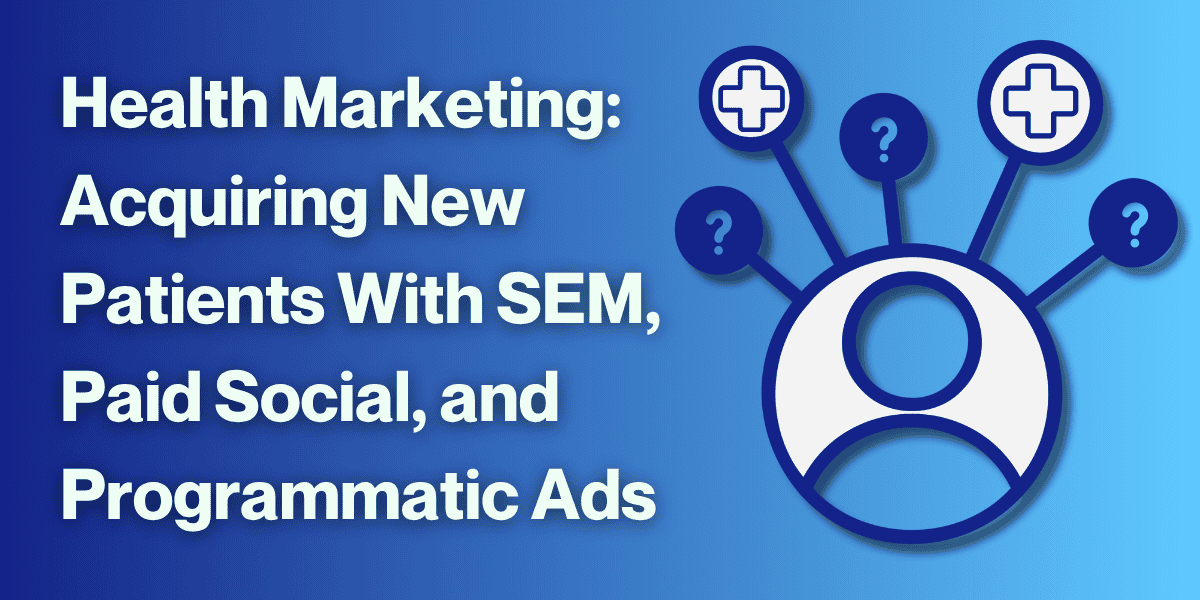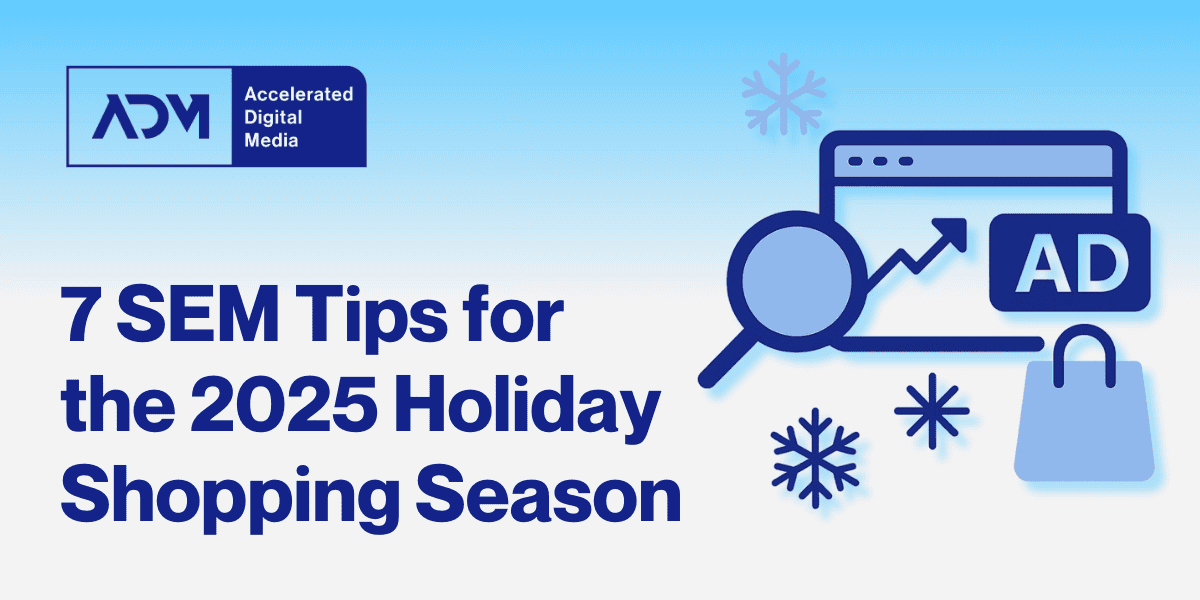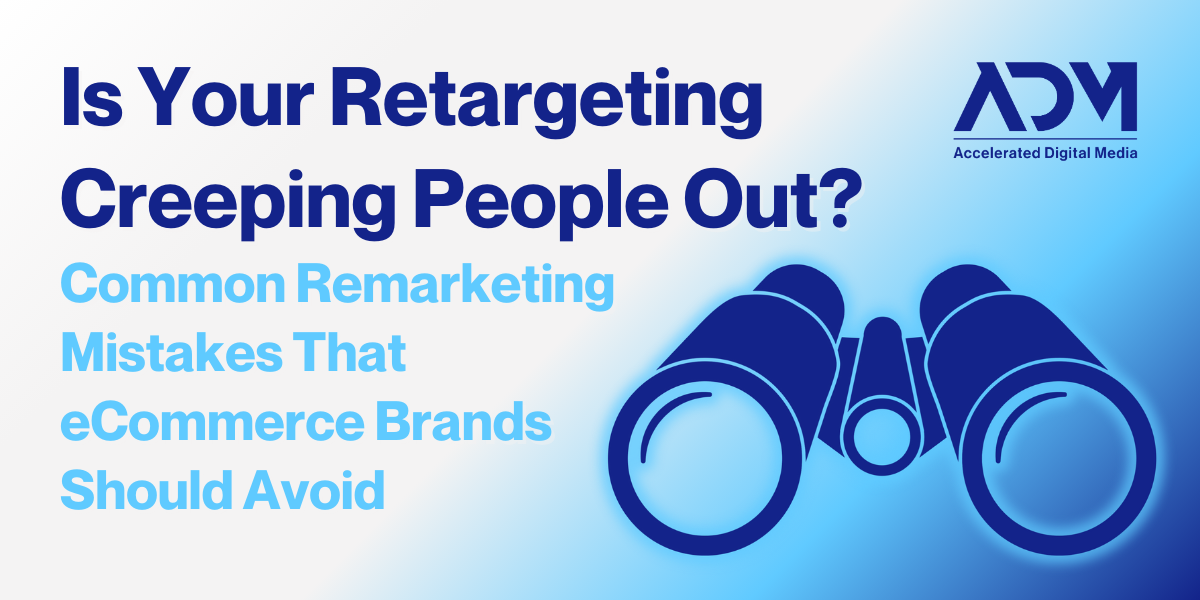Patient acquisition isn’t just about filling appointment slots—it’s about meeting people where they are in their search for care, earning their trust, and guiding them to take action. Digital marketing gives brands the tools to do just that, combining intent-based targeting with storytelling, education, and reach.
SEM (Search Engine Marketing), paid social, and programmatic advertising each play a unique role in attracting patients, and when used together, they can make your acquisition strategy far more effective. Here’s how to get the most out of each channel.
Skip to Section:
- Healthcare Marketing Tips for SEM
- Paid Social Tips for Healthcare
- Programmatic Advertising for Health and Wellness Brands
- Choosing Wisely
Health Marketing Tips for SEM
In health marketing, search is often the most direct route to capturing demand. When someone is actively searching for care, SEM helps you show up at the exact right moment.
Target High-Intent Keywords
Patients don’t search for “healthcare” in a vacuum—they search for answers, symptoms, providers, treatments, and availability. Your keyword strategy should reflect that level of specificity.
Why it works
High-intent searches like “acne prescription near me” or “asthma urgent care NYC” signal that someone’s close to taking action. Bidding on these terms ensures you’re visible when they’re ready to choose.
How to implement:
Build your keyword list around your top service lines, common conditions, and local modifiers. Use a mix of broad match with audience layering, plus exact and phrase match, to capture demand without wasting spend. This approach allows you to refine your targeting and ensure your ads appear to users who are most likely to convert, maximizing your return on investment.
Align Keywords and Landing Pages
Clicks are nice, but the goal is conversions. A disjointed user experience—like an ad for a dermatologist leading to a generic homepage—kills performance.
Why it works:
Landing pages that directly match the user’s intent improve Quality Score, lower CPCs, and increase conversions. Not to mention the fact that poorly-built or unappealing landing pages instantly dissuade users from trusting your brand.
How to implement:
Create dedicated pages for each core service, optimized for mobile and structured around clarity: symptoms, treatment options, insurance, cost, and FAQs. Include testimonials and trust signals. Make it easy to take action. This alignment not only improves the user experience but also enhances the quality score of your ads, leading to lower costs and higher visibility.
Run Conquest Campaigns
Even patients who are already comparing options can be won over—if your brand shows up with the right message.
Why it works:
Bidding on competitor terms or alternative treatments lets you intercept potential patients who are actively deciding where to go.
How to implement:
Identify top competitors or common alternatives (e.g., urgent care vs. telehealth), then build campaigns that highlight your unique strengths. Use urgency, outcomes, and value in your ad copy. Craft compelling ad copy that emphasizes the unique benefits of your services to persuade potential patients to choose your business.
Paid Social Tips for Healthcare
Paid social isn’t just a brand awareness tool—it’s a full-funnel health marketing driver that can build trust, tell stories, and move patients to act. Especially in healthcare, where empathy matters.
Lead with Empathy
Patients don’t want to be sold to—they want to feel understood. That’s especially true when dealing with sensitive conditions.
Why it works:
Ads that resonate emotionally simply perform better. Empathy builds credibility, and credibility builds conversion. People go on social media to stay up to date and feel a connection, and your health marketing should reflect those needs as well.
How to implement:
Use real patient stories (with consent), highlight provider-patient relationships, or create explainer videos that feel human. Respond to comments, engage in dialogue, and show that your company actually cares. This emotional connection can significantly enhance patient loyalty and encourage word-of-mouth referrals.
Share Useful, Educational Content
Healthcare decisions require a lot of thought, and every patient has questions. Paid social is a great place to answer them pre-emptively.
Why it works:
Educational content positions your brand as a helpful resource rather than a hard sell. It keeps your audience engaged and builds long-term trust.
How to implement:
Promote blog posts, infographics, quizzes, or videos on common conditions and treatments. Use native formats to keep users on-platform, and drive traffic to deeper content when relevant. By positioning your business as a trusted source of information, you can build credibility and foster long-term relationships with patients.
Showcase Social Proof
People feel more comfortable making health decisions if they can relate to someone else in a similar situation. Patient stories don’t just work in awareness—they help drive conversions too.
Why it works:
Real testimonials give prospective patients confidence that others have had good outcomes. It’s one of the strongest trust signals you can offer, and one of the things that paid social media is very best at.
How to implement:
Use UGC (user-generated content), review excerpts, or short video testimonials in your health marketing ads. If possible, target warm audiences (website visitors, email lists) with this creative to help them convert. Leverage real-life success stories to attract and retain patients.
Programmatic Advertising for Health Marketing
Programmatic advertising is your tool for smart, scalable reach. It uses data to find the right patients across the open web and connected devices—before they even start searching.
Take Advantage of Context
Search isn’t the only place intent shows up. By placing your ads alongside directly-relevant content, programmatic lets you reach people who are reading about symptoms or treatments—even before they start Googling providers.
Why it works:
Contextual campaigns allow you to place ads in relevant articles and pages, capturing early interest while staying compliant with targeting regulations.
How to implement:
Build keyword lists around relevant conditions or treatments. Use real-time bidding to serve ads on pages that match those keywords, and align your creative with the context (e.g., symptom checklist downloads, condition-specific landing pages). This approach ensures that your ads reach individuals who are actively seeking information about their health concerns, thereby increasing the likelihood of engagement and conversion.
Leverage Connected TV (CTV)
CTV lets you combine the emotional impact of TV with the precision of digital targeting. It’s one of the fastest-growing channels in healthcare.
Why it works:
Viewers on Hulu, Disney+, and other platforms are engaged, often watching on a big screen with sound on. CTV also allows for sophisticated audience segmentation based on real-world health data.
How to implement:
Build CTV campaigns using HIPAA-compliant first-party or third-party data to target specific health segments. Repurpose existing video creative, or develop short-form content that highlights outcomes, accessibility, or patient stories. Integrate your message with other channels for greater lift. This strategic integration ensures your message resonates across multiple touchpoints, enhancing brand recall and driving patient acquisition.
Harness Podcast Advertising for Personal, High-Impact Reach
Podcast ads are one of the best ways to connect with healthcare audiences who are fully engaged and listening closely. Unlike other formats, podcasts offer a more intimate setting where your message can feel personal and trusted.
Why it works:
Podcast advertising stands out because of its strong demographic targeting and the inherent trust listeners place in hosts and content. Studies consistently show podcast ads deliver better recall than typical display ads, often at a lower cost.
How to implement:
Find podcasts that naturally align with your target patients and services. For example, a mental health practice should look at shows focused on wellness, mindfulness, or therapy. Place your ads in pre-roll or mid-roll spots—moments when listeners are most attentive and less likely to skip. This strategic placement ensures your message lands when it matters, improving brand recall and encouraging action.
The conversational, authentic nature of podcasts lets healthcare brands build real connections with listeners—turning awareness into interest and, ultimately, new patients. It’s a cost-efficient channel that stretches your marketing dollars while delivering meaningful impact.
Choosing Wisely
There’s no single channel that drives patient acquisition. At the end of the day, leveraging the right mix of SEM, paid social, and programmatic advertising is crucial for effective patient acquisition. The best marketing strategies utilize all available channels in ways that complement each other, so you can reach new patients with a comprehensive and consistent approach across multiple touchpoints.
However, executing these strategies in a competitive, regulated field like healthcare requires specialized expertise and a deep understanding of the industry—something most generalist agencies lack. This is where partnering with a dedicated health marketing agency can make a significant difference. Fortunately, that’s what we are! If you’re interested in learning more about our healthcare-specific digital marketing strategies, don’t hesitate to contact our team today.



